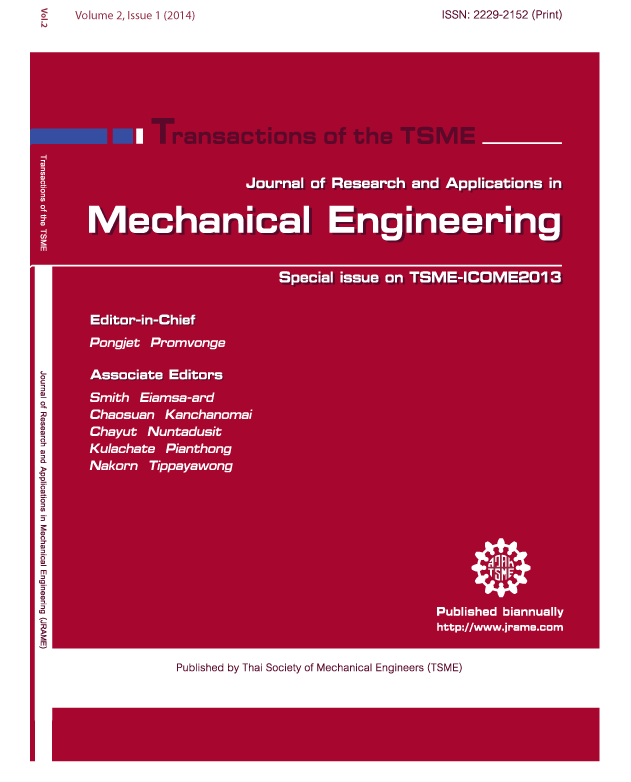The comparison of strain distribution on Thai normal, varus and total knee arthroplasty inserted femoral bone
Main Article Content
Abstract
Knee is the largest joint in the human body and it has been heavily used, caused to the osteoarthritis. When the knee is more degenerate, it cause pain in every movement. The treatment has several methods such as Knee Arthroscopic Surgery, High Tibial Osteotomy and Total Knee Arthroplasty. This research aims to evaluate the strain distribution on the Thai femoral bone with the normal leg, bow-leg and inserted total knee prosthesis under the daily activities, as walking and stair-climbing by finite element analysis. The results were compared the maximum equivalent of total strain on the medial and lateral side in three cases. The results showed that the ratio of strain distribution between medial and lateral side on Thai femur with normal bone, varus bone and bone inserted TKA under walking condition are 67.27%, 84.01% and 70.68% respectively; and 60.96%, 82.74% and 68.19% respectively under stair-climbing condition. After the surgery, the ratio of strain distribution on the varus femoral bone decreased and approached that of normal femoral bone.
Article Details
This work is licensed under a Creative Commons Attribution-NonCommercial-ShareAlike 4.0 International License.
References
The Angle Orthodontist, Vol. 64(3), 1994, pp. 175-188.
[2] Peraz, A., Mahar, A. and Negus, C. A computational evaluation of the effect of intramedullary nail material
properties on the stabilization of simulated femoral shaft fracture, J. Med Eng & Phys, Vol. 30, 2008, pp.755-760.
[3] Bendjaballah, M.Z., Shiraz-Adi, A. and Zukor, D.J. Finite element analysis of human knee joint in varusvalgus,
Clinical Biomechanics, Vol. 12, 1997, pp. 139-148.
[4] Weiss, J.A and Gardine, J.C. Computational Modeling of Ligament Mechanics, Critical Review in
Biomedical Engineering, Vol. 29, 2001, pp. 1-70.
[5] Heller, M.O., Bergman, G., Kassi, J.P., Claes, L., Hass, N.P. and Duda, G.N. Determination of muscle
loading at the hip joint for use in pre-clinical testing, J. Biomechanics, Vol. 38, 2004, pp. 1155-1163.
[6] Yang, N.H., Canavan, P.K. and Nayeb-Hashemi, H. The Effect of the Frontal Plane Tibiofemoral Angle and
Varus Knee Moment on the Contact Stress and Strain at the Knee Cartilage, J. Applied Biomechanics, Vol.
26, 2010, pp. 432.
[7] Stevens, M.A., El-Khoury, G.Y., Kathol, M.H. and Brandser, E.A., Chow S. Imaging features of avulsion
injuries, Radiographics, Vol. 19(3), 1999, pp. 655-672
[8] Paley, D. Principles of Deformity Correction, ISBN: 3-540-41665-X, Springer-Verlag Berlin Heidelberg,
New York, 2002.
[9] Fujisawa, Y., Masuhara, K., andShiomi, S. The effect of high tibialosteotomy on osteoarthritis of the
knee.An arthroscopic study of54 knee joints, OrthopClin North Am, Vol. 10, 1979, pp. 585-608.



